India’s maiden foray to Mars is now just one month out from the Red Planet and closing in fast on the final stages of the history making rendezvous culminating on September 24, 2014.
As of Aug. 22, 2014, the Mars Orbiter Mission, or MOM, was just 9 million kilometers away from Mars and the crucial Mars Orbital Insertion (MOI) engine firing that places India’s first interplanetary voyager into orbit around the 4th planet from the Sun.
MOM was designed and developed by the Indian Space Research Organization’s (ISRO) at a cost of $69 Million and marks India’s maiden foray into interplanetary flight.
So far it has traveled a total distance of 602 million km in its heliocentric arc towards Mars, says ISRO. It is currently 189 million km away from Earth. Round trip radio signals communicating with MOM take 20 minutes and 47 seconds.
After streaking through space for some ten and a half months, the 1,350 kilogram (2,980 pound) MOM probe will fire its 440 Newton liquid fueled main engine to brake into orbit around the Red Planet on September 24, 2014 – where she will study the atmosphere and sniff for signals of methane.
The do or die MOI burn on September 24 places MOM into an 377 km x 80,000 km elliptical orbit around Mars.
ISRO space engineers are taking care to precisely navigate MOM to keep it on course during its long heliocentric trajectory from Earth to Mars through a series of in flight Trajectory Correction Maneuvers (TMSs).
The last TCM was successfully performed on June 11 by firing the spacecraft’s 22 Newton thrusters for a duration of 16 seconds. TCM-1 was conducted on December 11, 2013 by firing the 22 Newton Thrusters for 40.5 seconds.
Engineers determined that a TCM planned for August was not needed.
The final TCM firing is planned in September 2014.
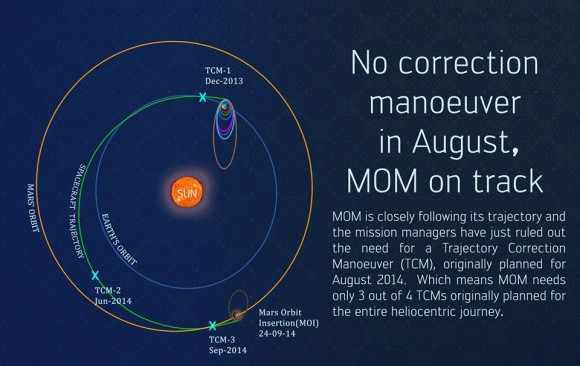
Engineers also completed the checkout of the medium gain antenna in August, “which will be used to communicate with Earth during the critical MOI” maneuver, ISRO reported.
The probe is being continuously monitored by the Indian Deep Space Network (IDSN) and NASA JPL’s Deep Space Network (DSN) to maintain it on course.
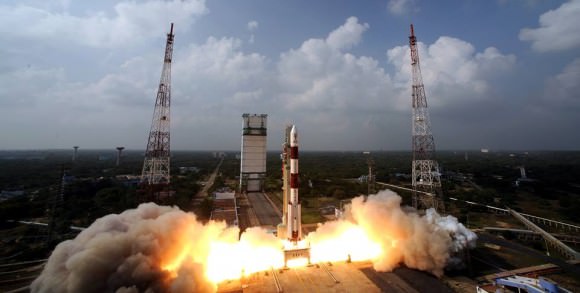
MOM was launched on Nov. 5, 2013 from India’s spaceport at the Satish Dhawan Space Centre, Sriharikota, atop the nations indigenous four stage Polar Satellite Launch Vehicle (PSLV) which placed the probe into its initial Earth parking orbit.
Six subsequent orbit raising maneuvers raised its orbit and culminated with a liquid fueled main engine firing on Dec. 1, 2013. The Trans Mars Injection(TMI) maneuver that successfully placed MOM on its heliocentric trajectory to the Red Planet.
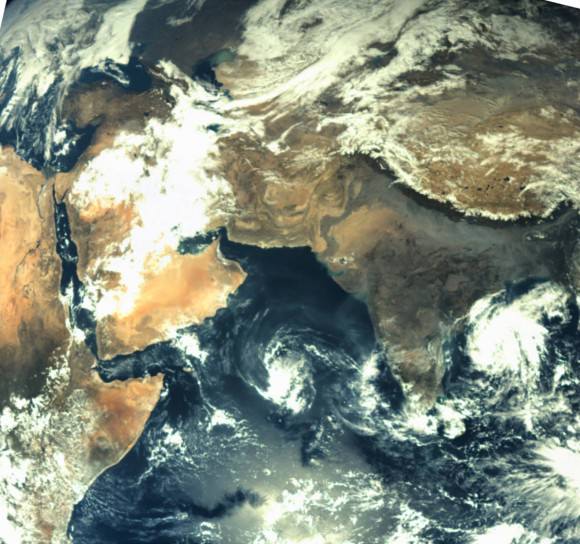
MOM is streaking to Mars along with NASA’s MAVEN orbiter, which arrives at Mars about two days earlier.
MOM and MAVEN will join Earth’s fleet of 3 current orbiters from NASA and ESA as well as NASA’s pair of sister surface rovers Curiosity and Opportunity.
If all goes well, India will join an elite club of only four who have launched probes that successfully investigated the Red Planet from orbit or the surface – following the Soviet Union, the United States and the European Space Agency (ESA).
MOM’s main objective is a demonstration of technological capabilities and it will also study the planet’s atmosphere and surface.
The probe is equipped with five indigenous instruments to conduct meaningful science – including a multi color imager and a methane gas sniffer to study the Red Planet’s atmosphere, morphology, mineralogy and surface features. Methane on Earth originates from both geological and biological sources – and could be a potential marker for the existence of Martian microbes.
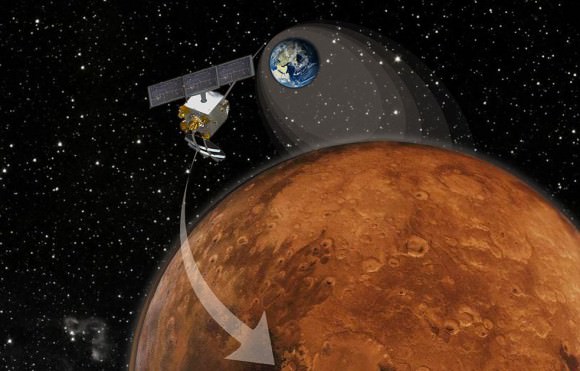
ISRO is also working to determine if MOM can gather scientific measurements of
Comet C/2013 A1 Siding Spring during an extremely close flyby with the Red Planet on Oct. 19, 2014.
MAVEN and NASA’s other Mars probes will study the comet.
Stay tuned here for Ken’s continuing MOM, MAVEN, Opportunity, Curiosity, Mars rover and more planetary and human spaceflight news.
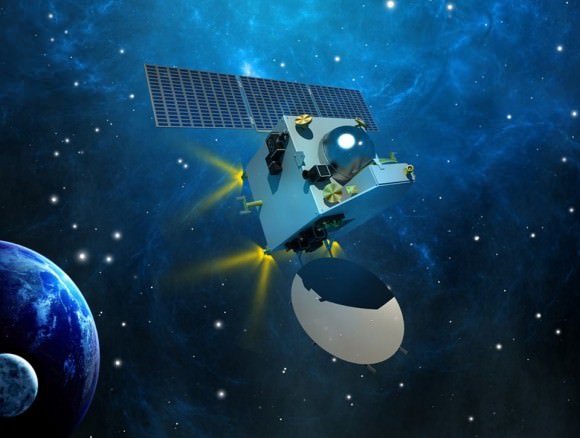

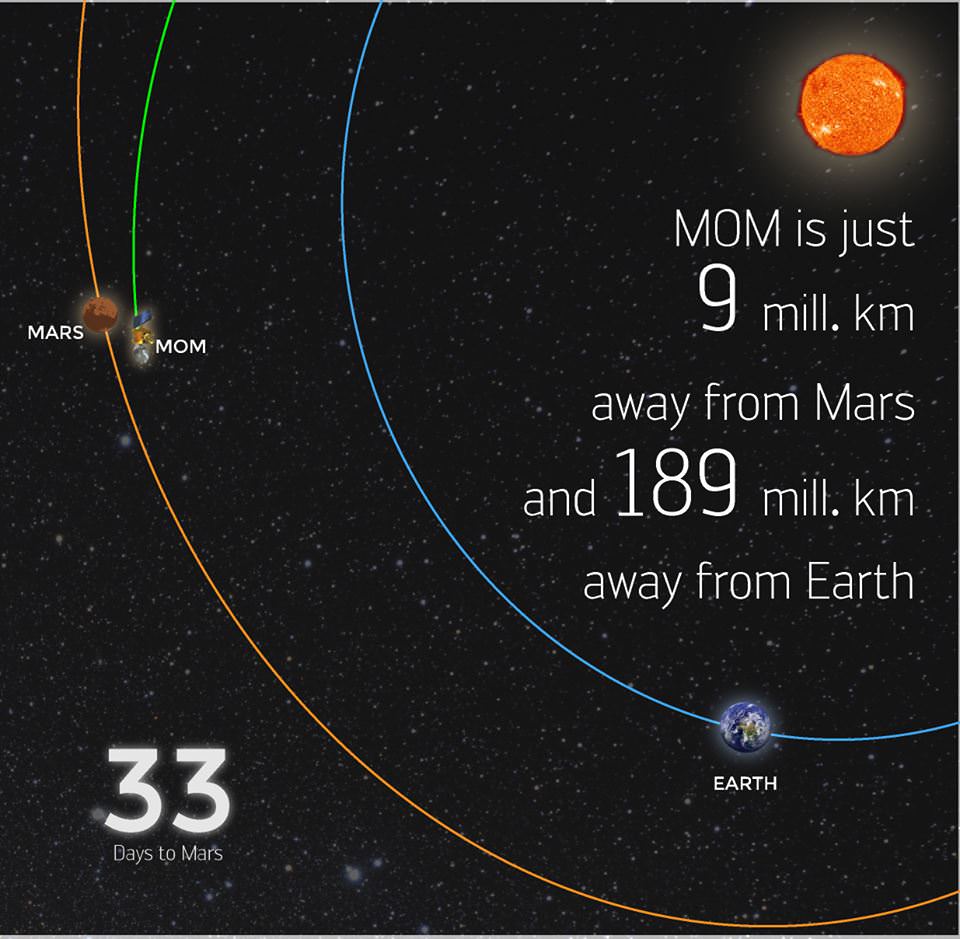
It’s really encouraging that more and more decision makers with a budget want to send something to Mars. And do real science. Dubai (UAE) has said they will do it, and they already sponsor Virgin Galactic. Japanese Jaxa has sent a probe which failed. China had a probe on the Russian Fobos-Grunt mission. Private projects are at least talked about. Who’s next? On every passage every two years, new missions will be sent to Mars and it won’t stop.
Well done India! This probe will produce much interesting science, and will be a very welcome addition to the Mars fleet.